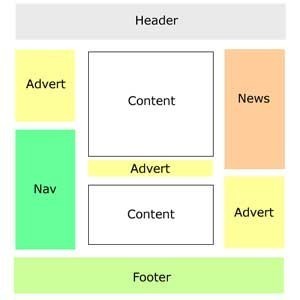Understanding Webpage Segments for SEO
In the world of search engine optimisation (SEO), understanding how search engines interpret and rank web pages is crucial. A recent patent granted to Google sheds light on how the search engine might discern the different segments of a webpage.
Webpage Structure and Search Engines
For many years now search engines have been analysing the architecture of web pages to determine their relevance and importance. A typical webpage (or web page) is created with various HTML elements. Google, for instance, examines the HTML of a webpage and replicates its appearance in a browser. This process helps the search engine recognise the distinct sections of a website page.
Links located in diverse areas of a webpage might receive varied scores or weightings. This system organises the links on a page by their significance, prioritising those in the main content and at the top of the page. Conversely, footers containing legal information, copyright details, and the like are given a lower score.
Text and Its Importance
Text undeniably plays a pivotal role in website ranking. The process of weighting is also applied to website content, ensuring search engines grasp the core message of the site. The placement of key phrases is crucial. For instance, a keyword present in the title or main content is considered more valuable than one located in the footer or sidebar.
The Role of Images and ALT Text
It’s astonishing to note the frequency with which images on web pages lack ALT text. Not only is ALT text vital for accessibility (and is a core tenet of the W3C), but it’s also essential for ranking an image in search engines like Google. The patent details how Google might examine text adjacent to an image, identify the image, and then generate a caption, which could be utilised in image searches
META Descriptions and Their Relevance
Contrary to some beliefs, Google doesn’t rely on the META description tag to decide a webpage’s ranking. However, it remains a significant element. The META description appears as a snippet in search engine results beneath the title. An engaging snippet can motivate users to click on your link. According to Google Patent 7913163, this snippet is derived from the section of the web page most pertinent to the searched keyword.
Final thoughts
The manner in which a website is constructed and its elements are organised should be a primary consideration in any SEO strategy. Proper segmentation and understanding of these segments can significantly influence a site’s search engine ranking.










This is actually what a professional wants. Good collection and how to create of the page. you have defined this topic of SEO page elements well. Thanks for sharing this blog.